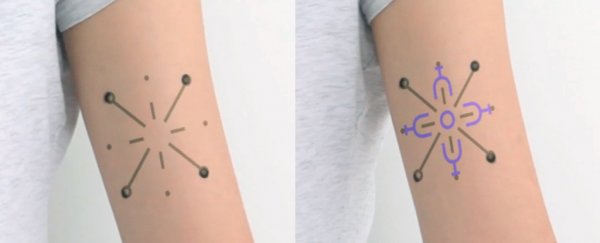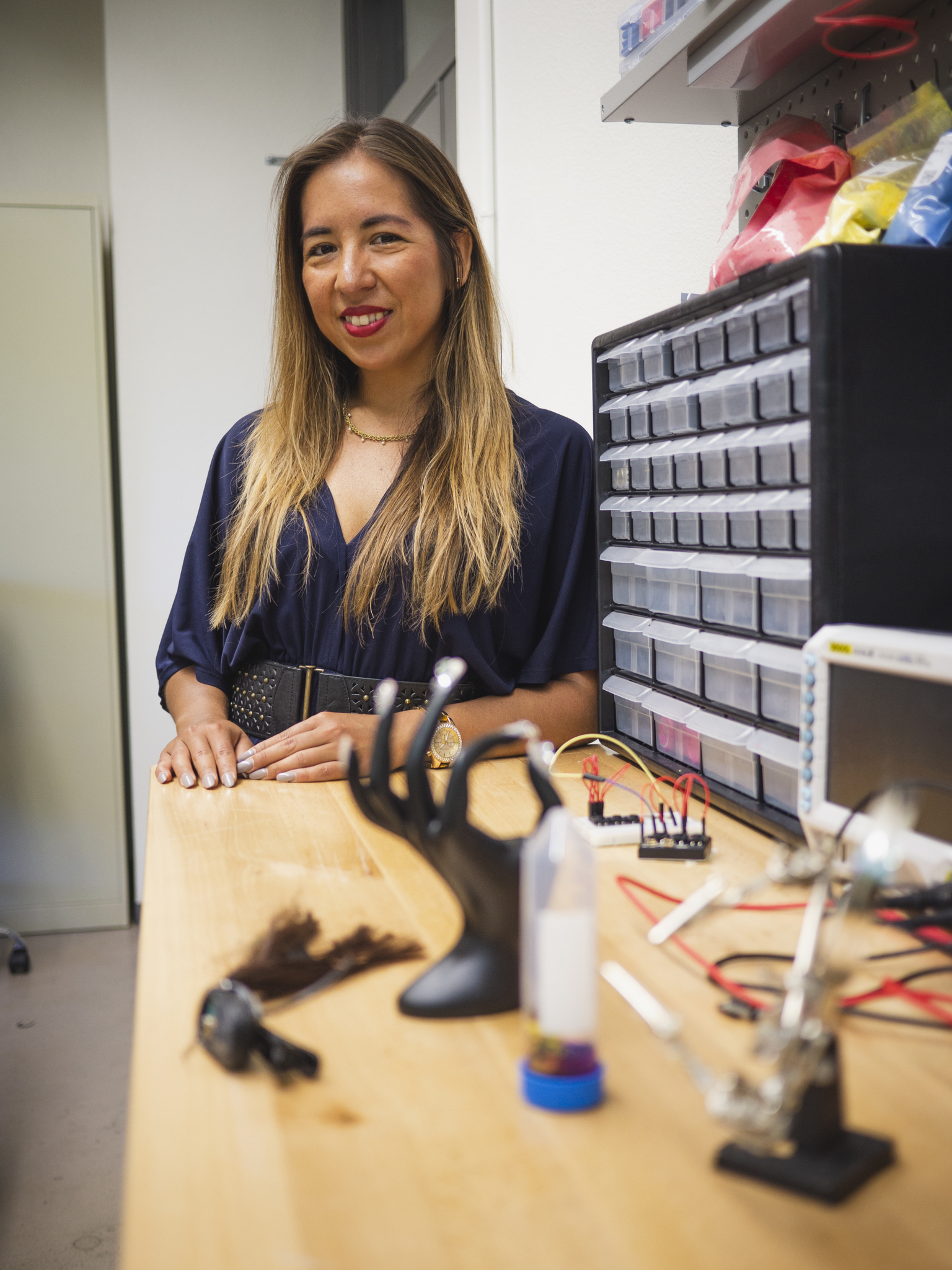
Katia Vega doesn’t have a design or medical background. Nor does she sport tattoos. Yet the assistant professor of design led a team in developing biosensitive tattoos that change color in response to the body’s blood sugar levels. Called DermalAbyss, it won the SXSW Interactive Innovation Award for SciFi No Longer earlier this year.
The color-changing tattoos, created with a team from the MIT Media Lab and Harvard Medical School, are part of Vega’s ongoing research into integrating technology and the body.
For an earlier project, Beauty Technology, Vega developed conductive eyeshadow that allows one to turn lights on and off with the literal blink of an eye and fake fingernails that pay the bus fare with a wave of the hand. “The goal is to create a seamless device — making the body an interactive platform,” Vega said.

Vega took an unusual path to becoming a designer. All three of Vega’s degrees are in computer science and she wasn’t particularly interested in fashion or design. “I just knew that I wanted to make something different.” She was helped along in that elusive dream by a professor who suggested she’d get a creative boost by working at an art school. So after completing her doctoral studies, Vega headed to the wearables lab at Hong Kong Baptist University.
“It changed my way of thinking,” she said. “I could see clearly how art and technology could work together.”
Vega was also inspired by the huge eyelashes, elaborate makeup, and decorated fingernails of the young women she encountered in Hong Kong.
“Seeing them made me think about what these could do other than just enhance appearance,” Vega recalled. “You can still do this to make you pretty, but also give you a superpower.”
Going forward, Vega sees her research having many applications: allowing people to use their bodies to make purchases; assisting those with disabilities to do daily tasks on their own; and letting artists turn their bodies into control units for sound and light. In bringing these to fruition, she has two overriding goals: have the technology integrated in a way that it is part of the body, and use unconscious movements to set it in motion.
“I’m interested in creating seamless technology; the goal is to make it indistinguishable from our body.”
